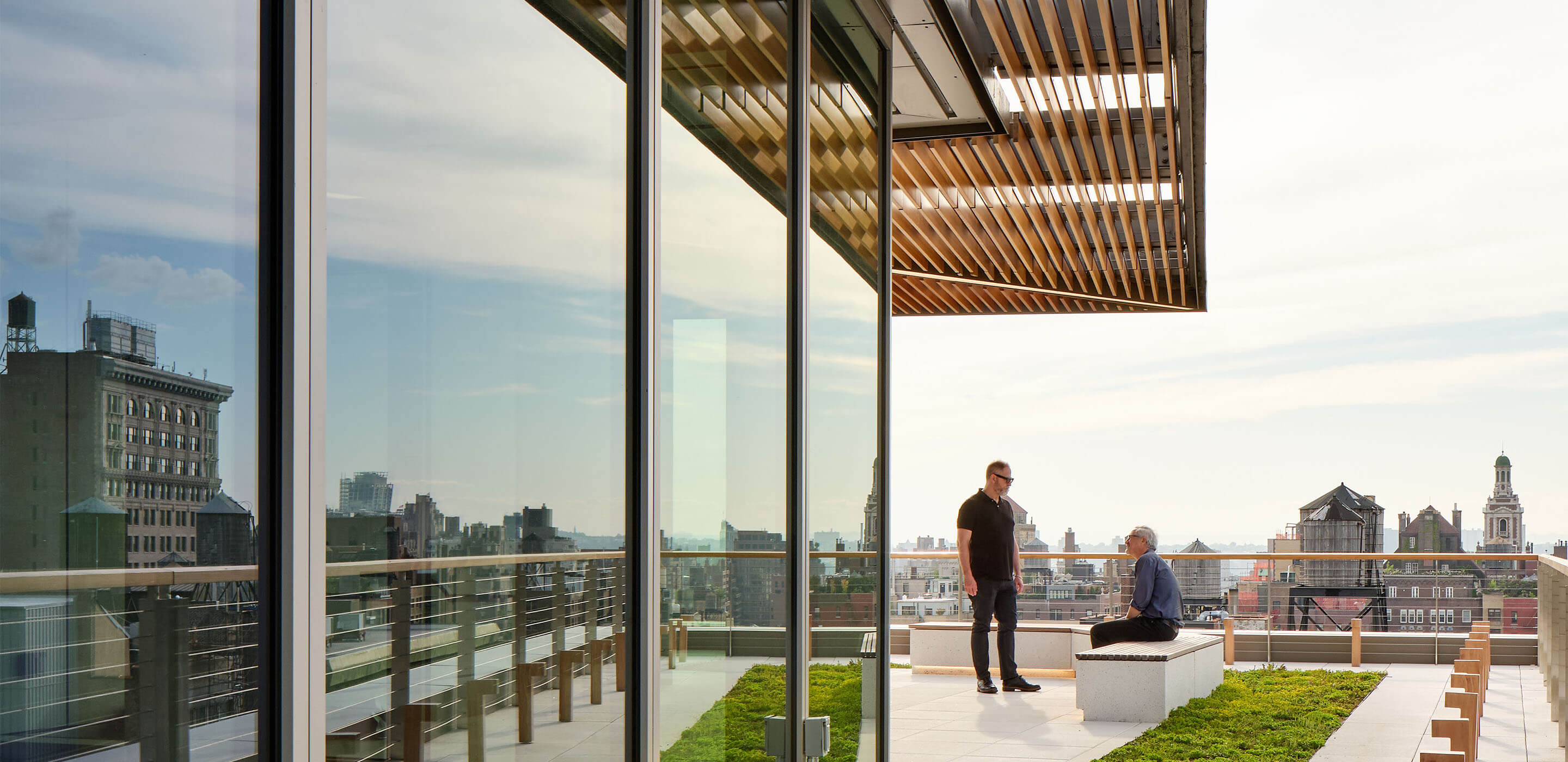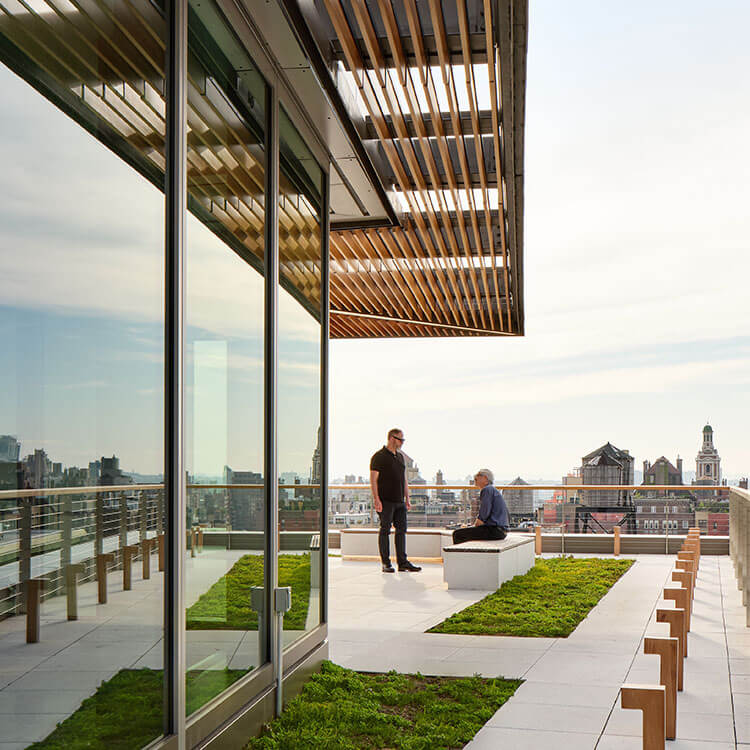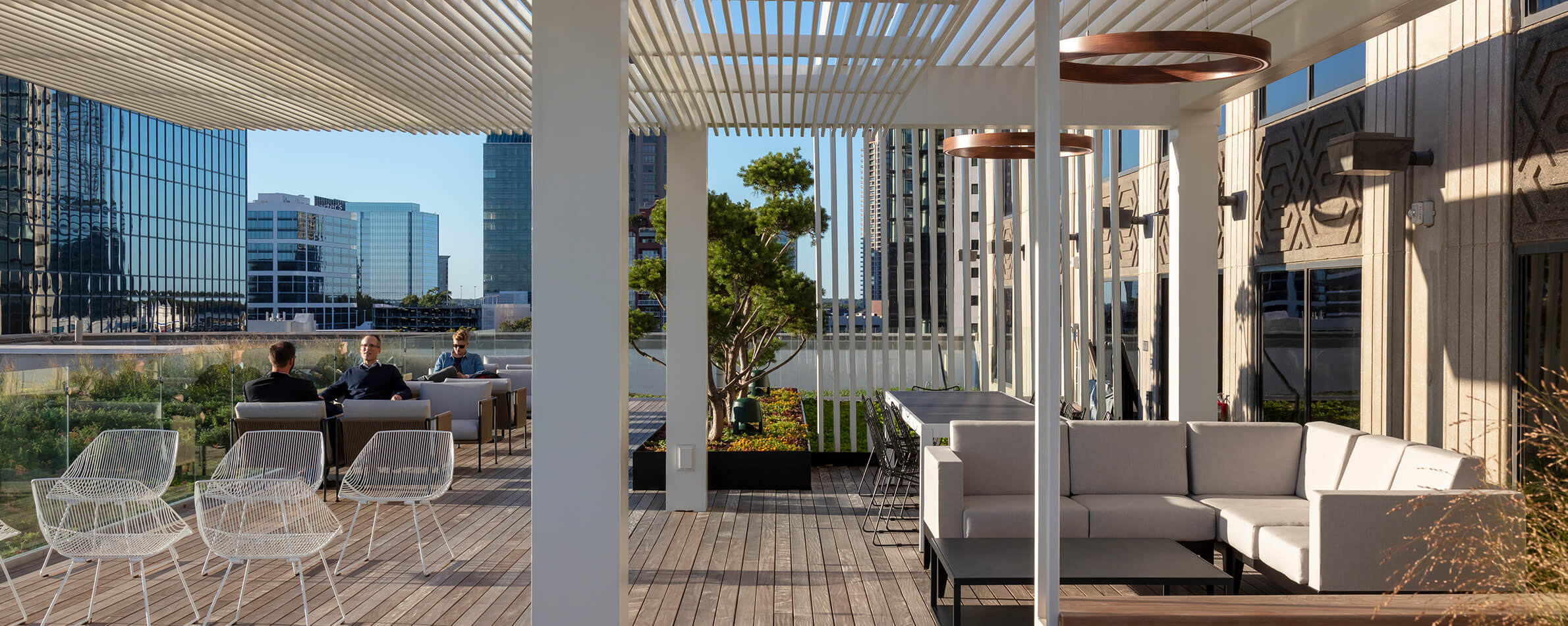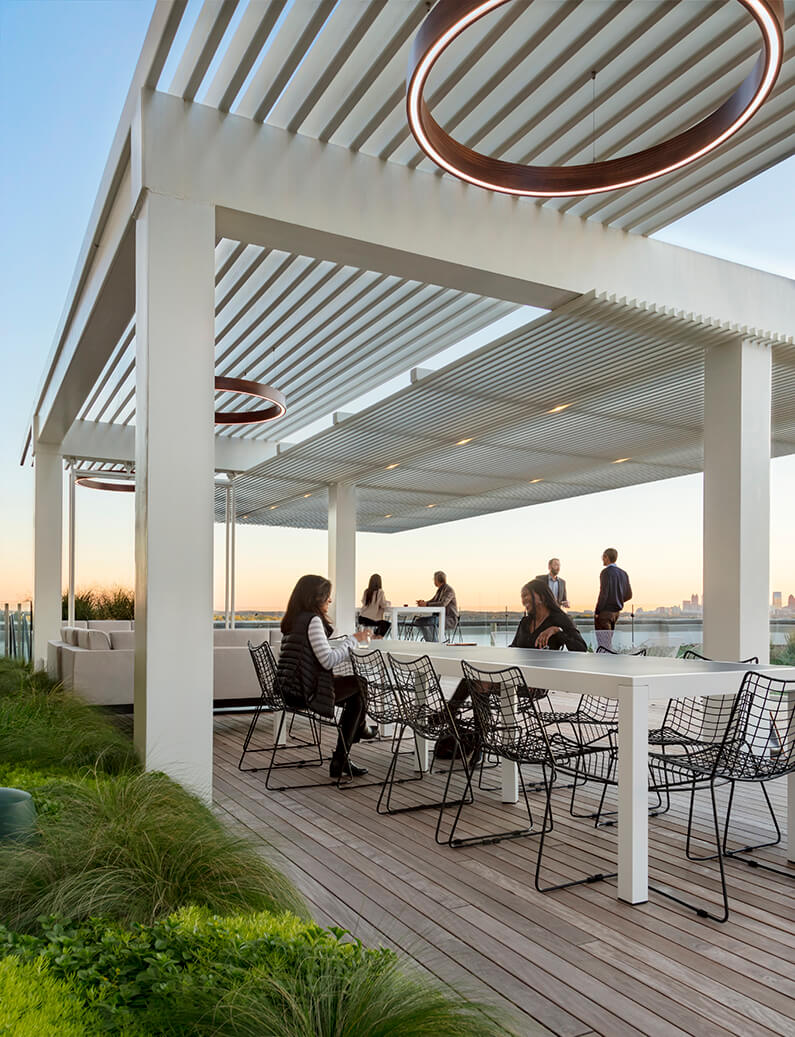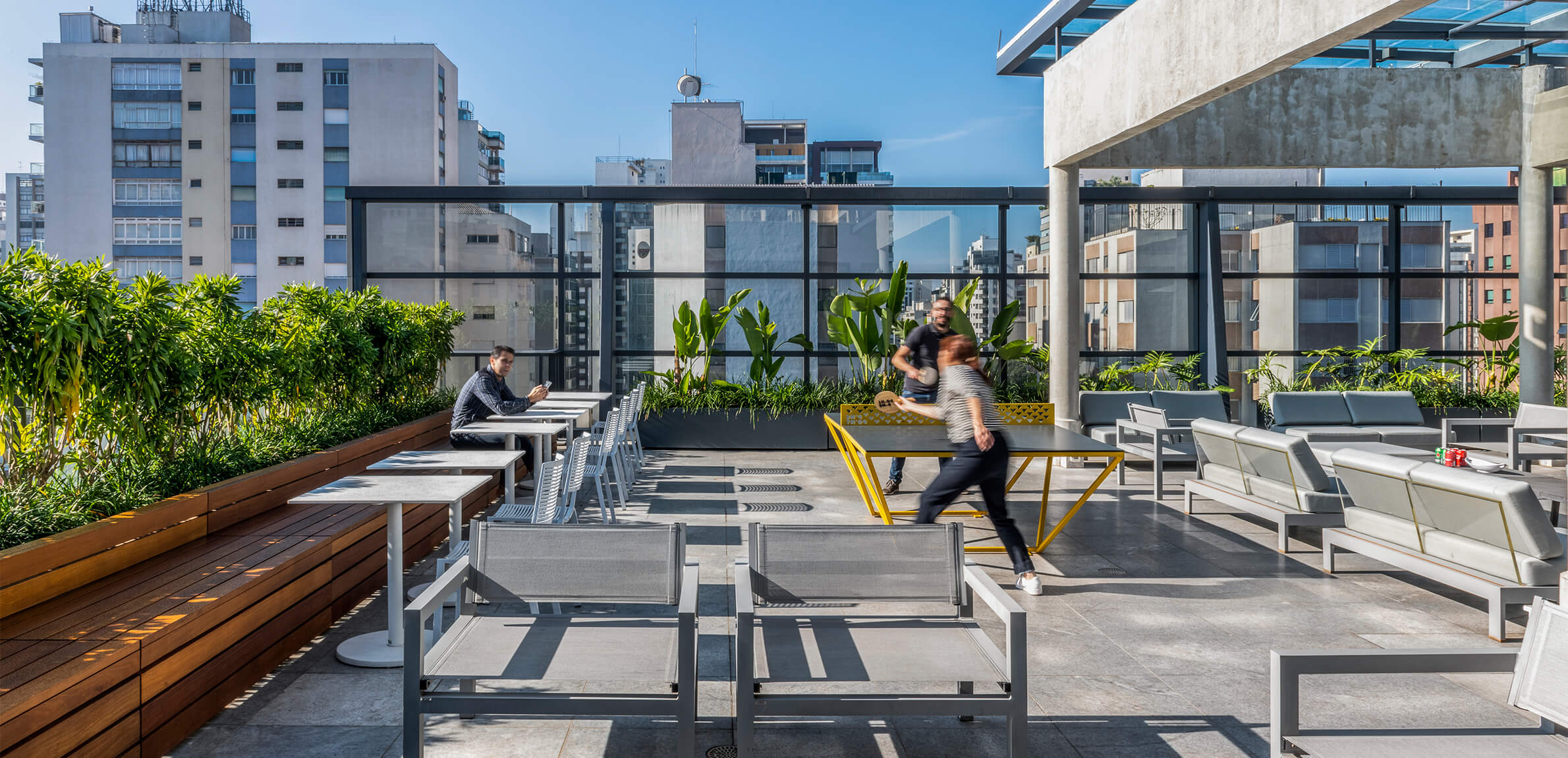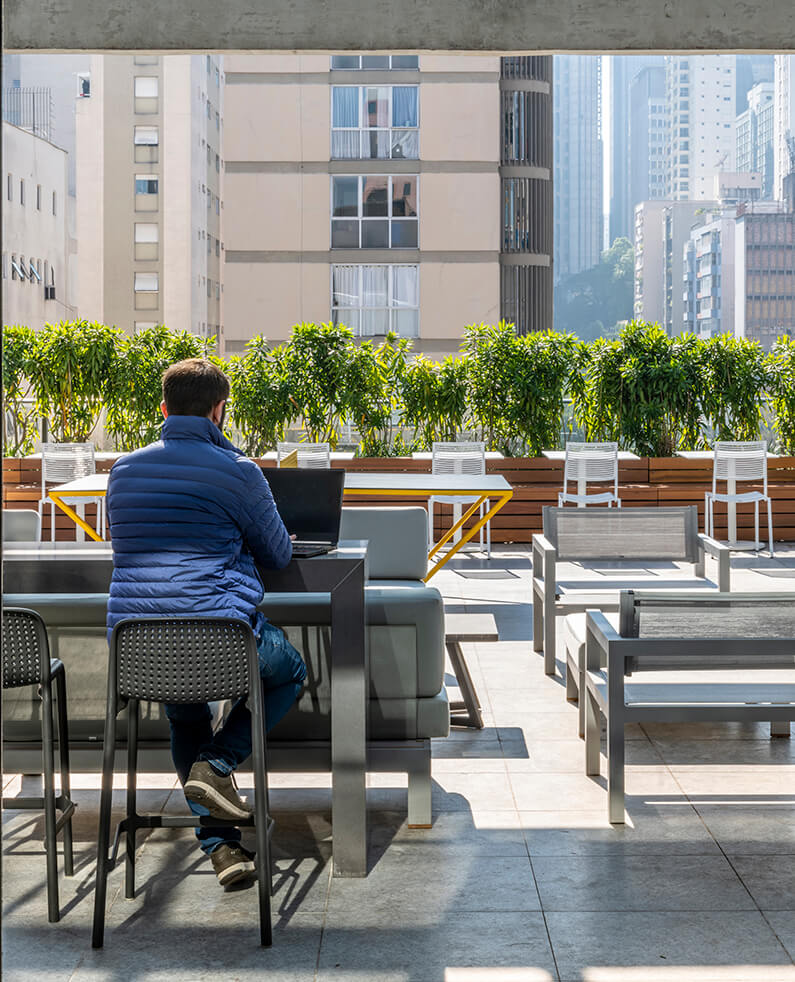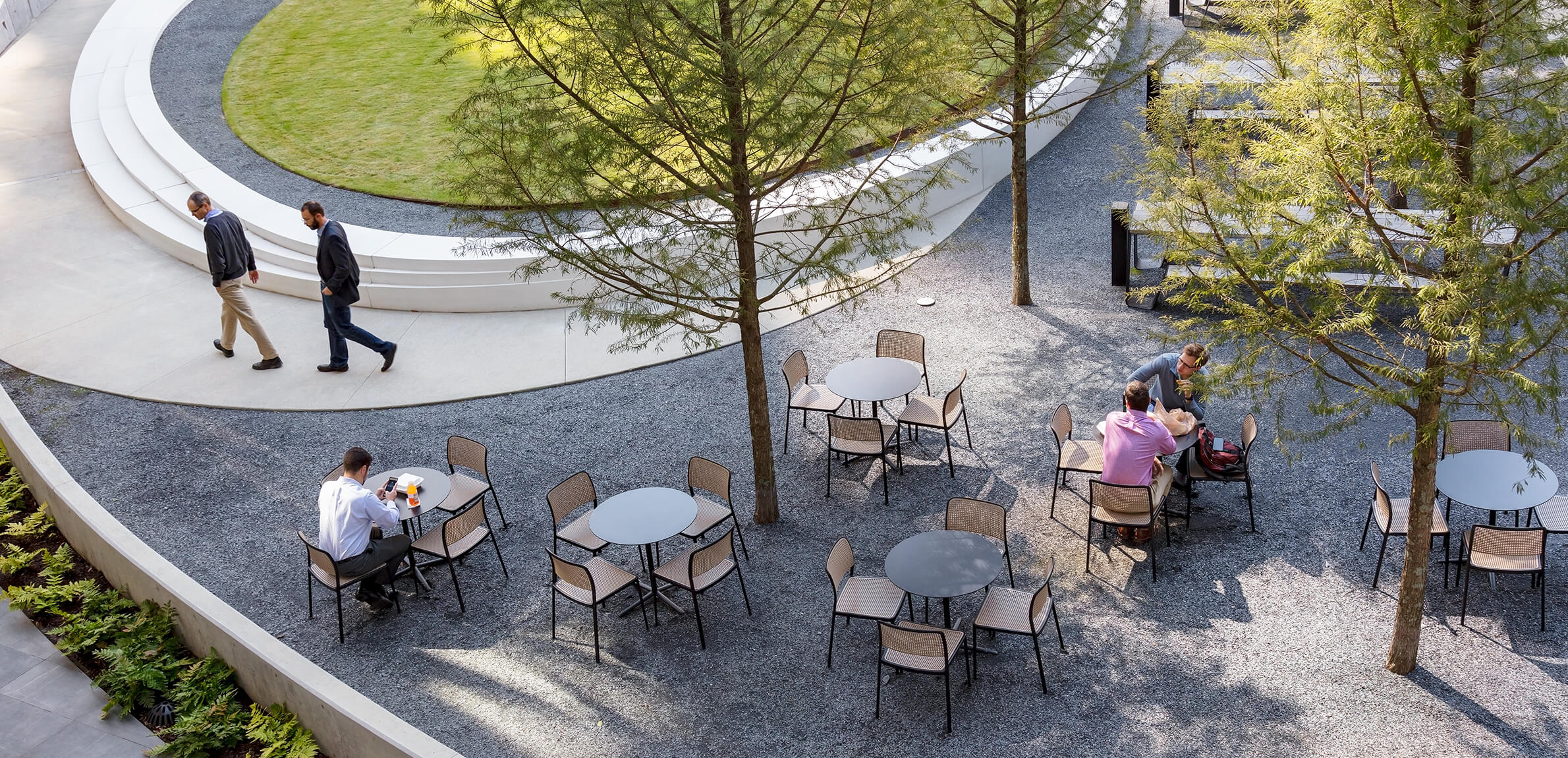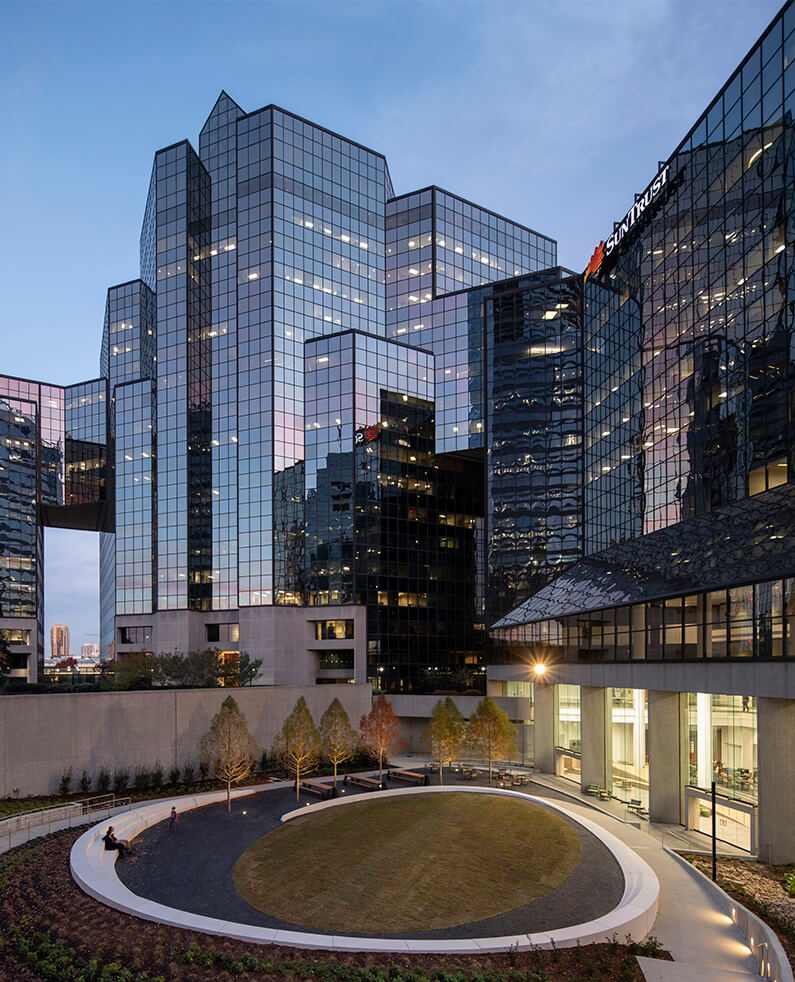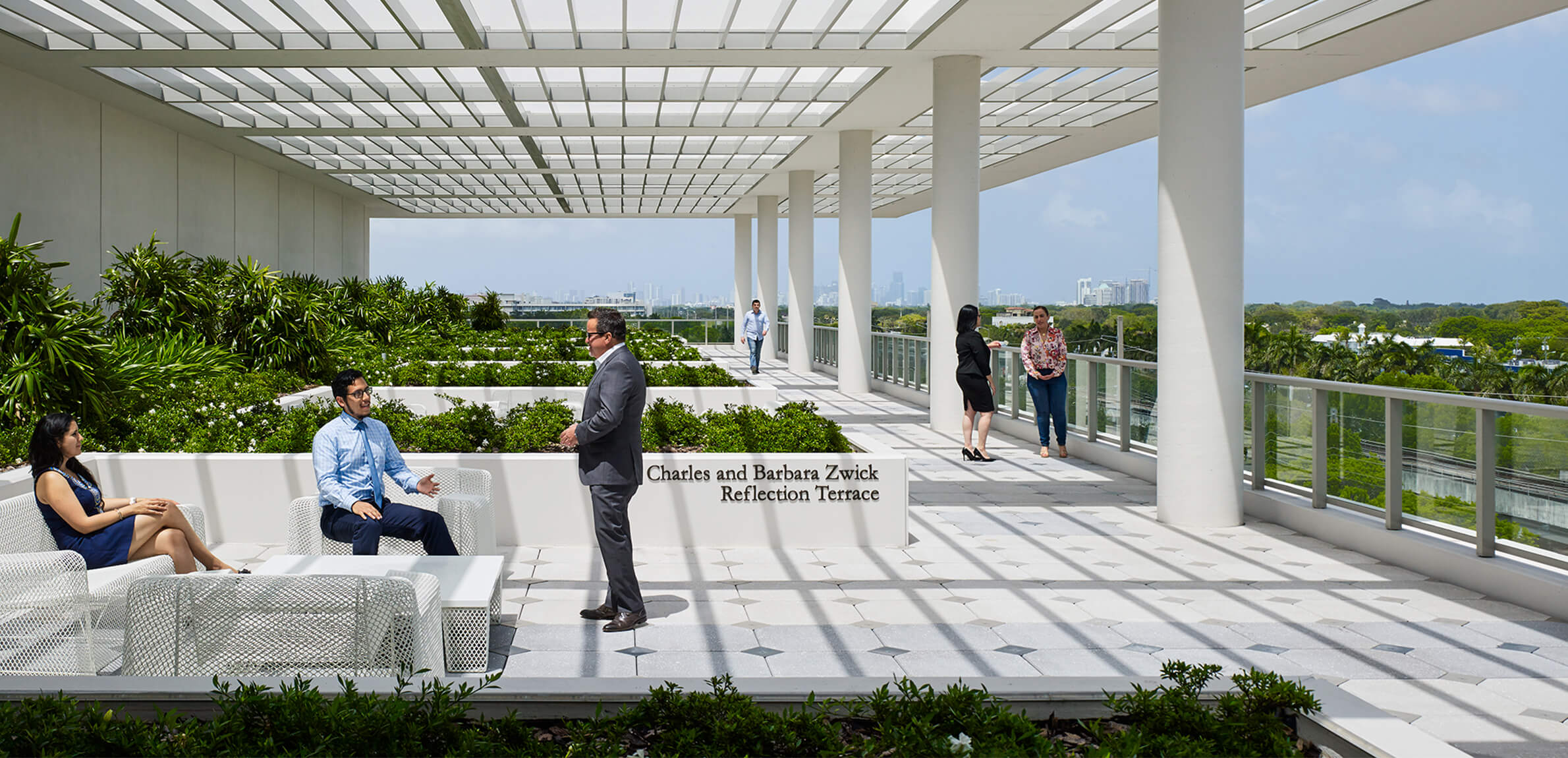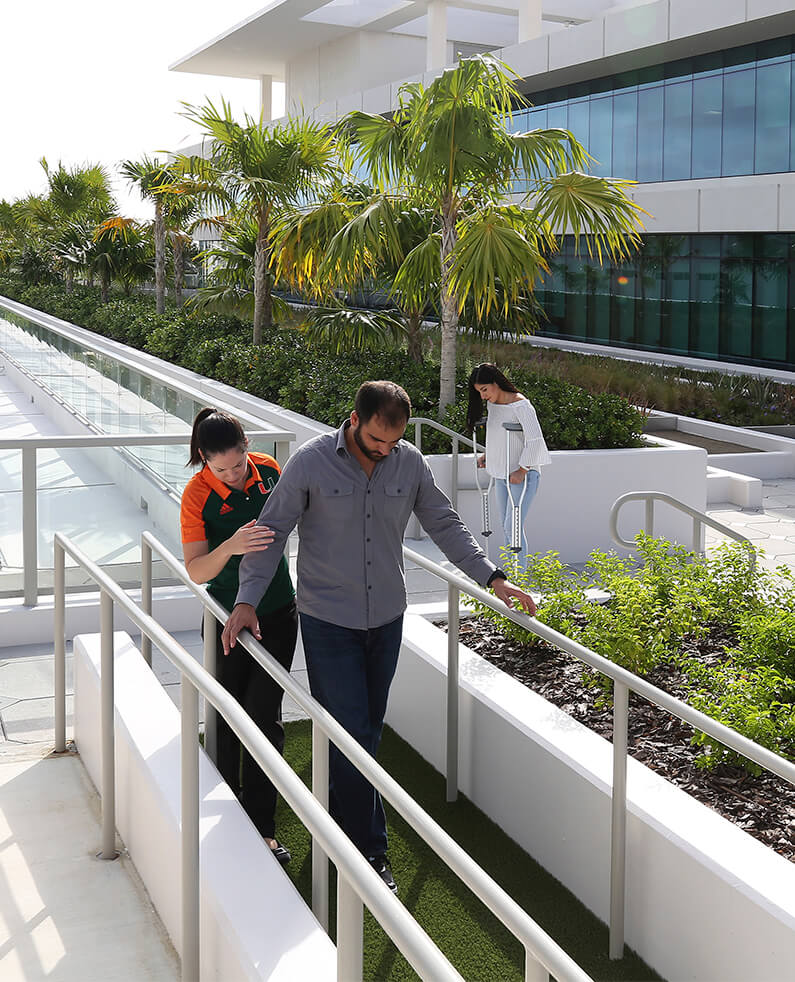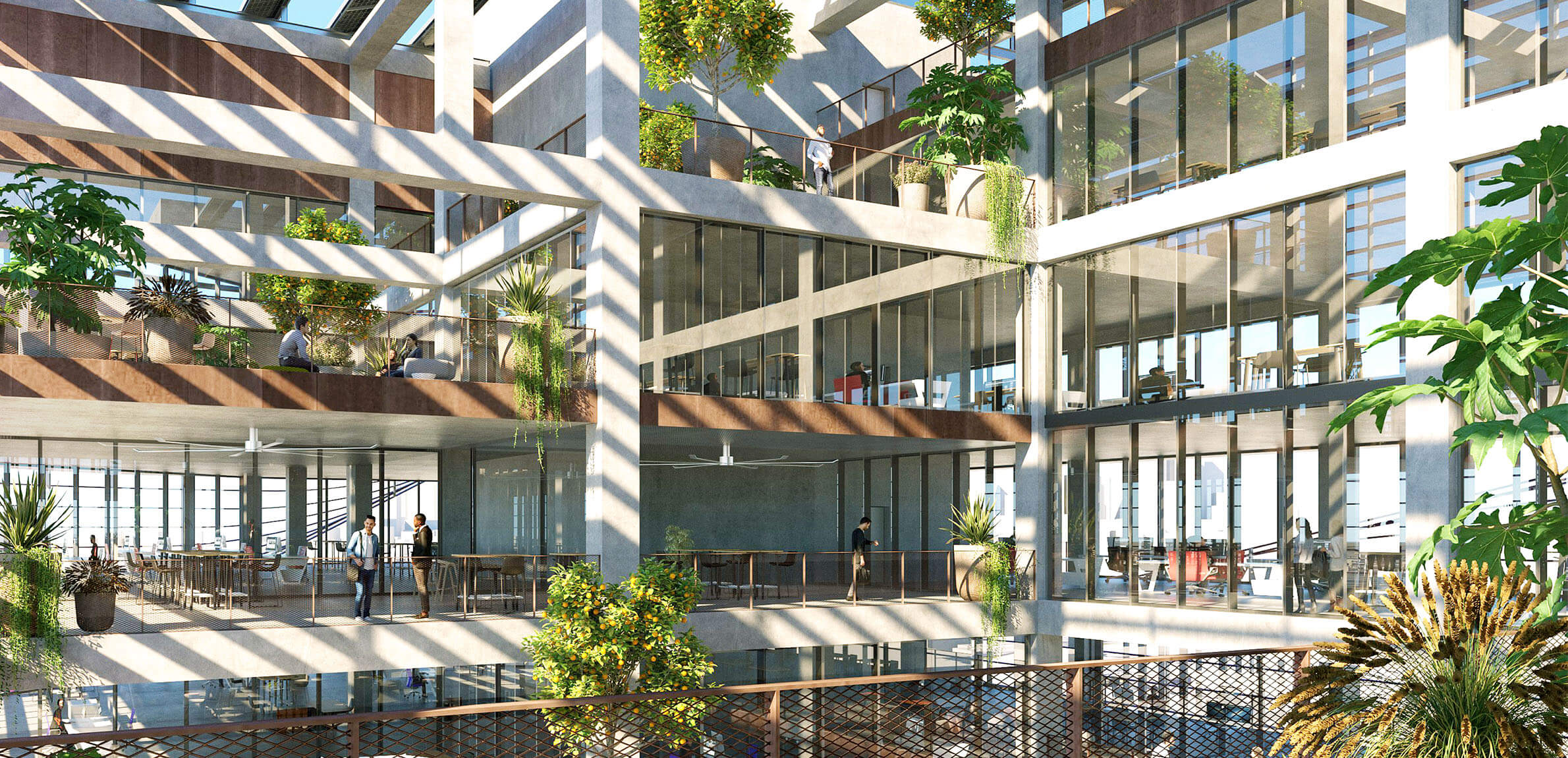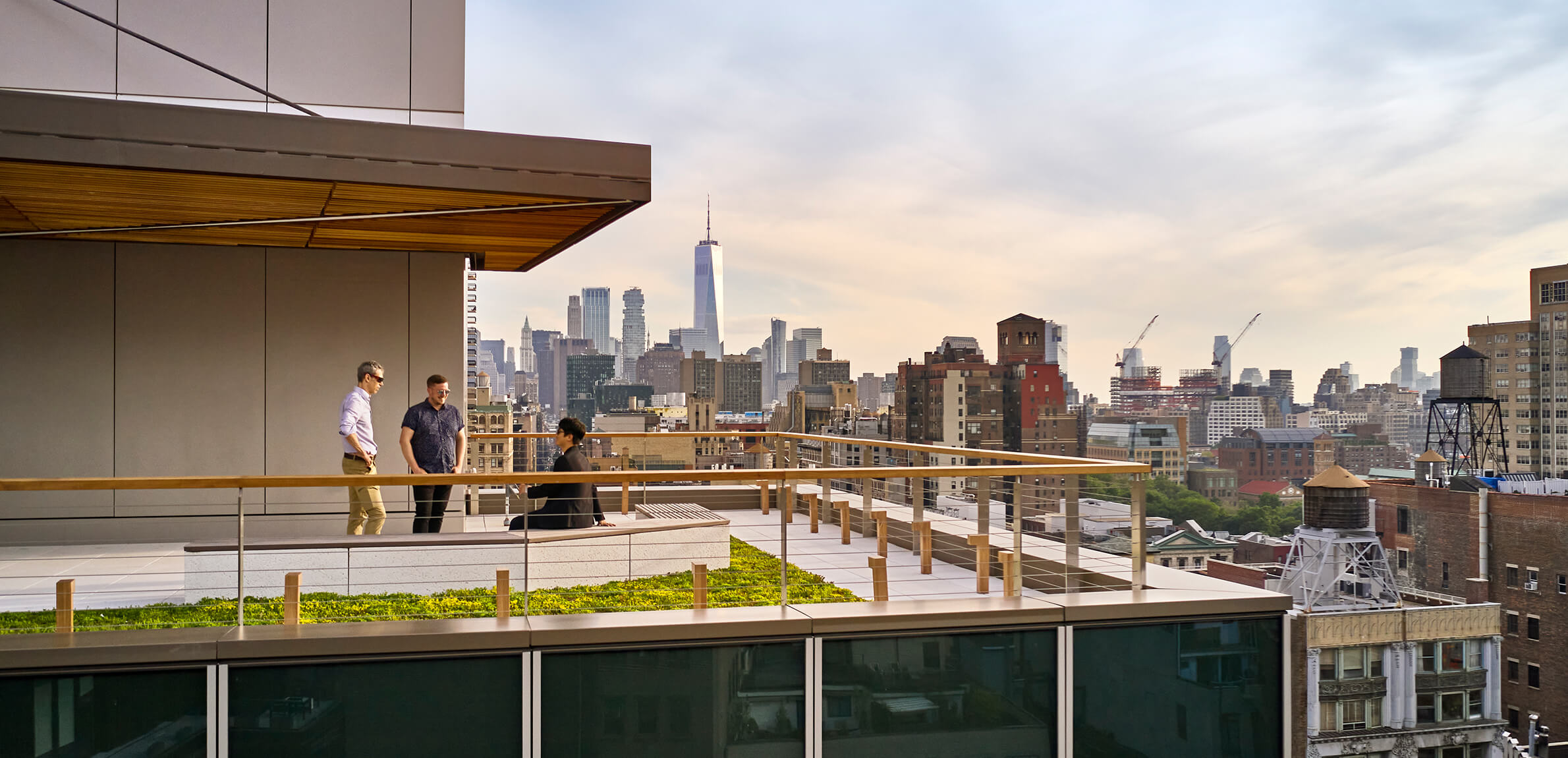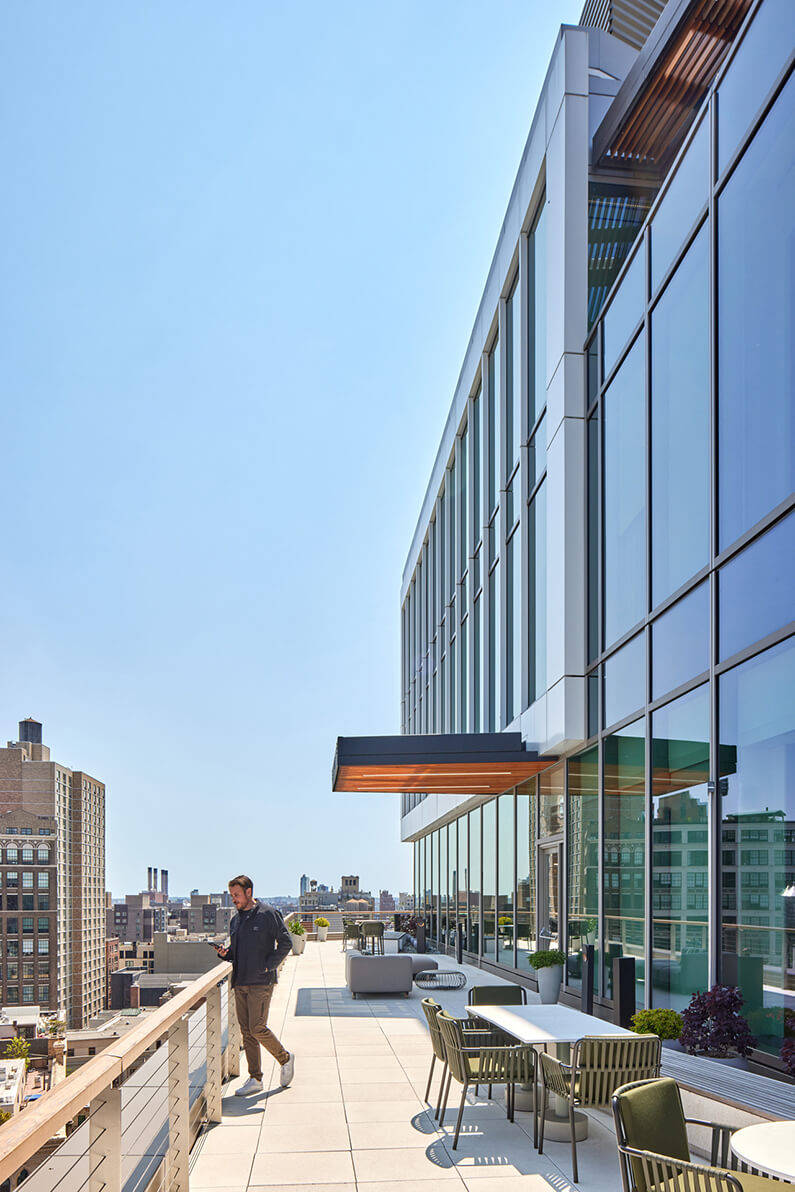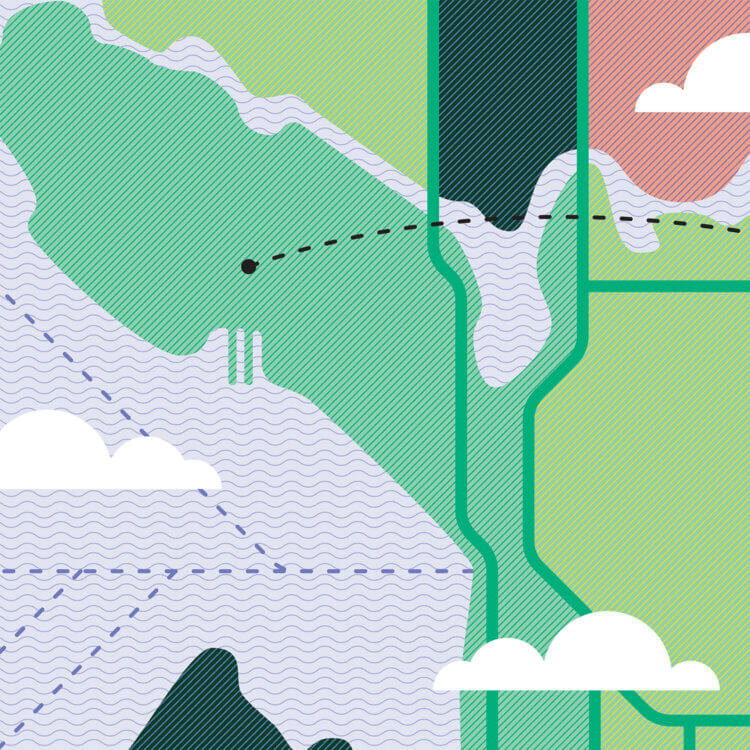The promise of fresh air, greenery, and natural light helps employers recruit the best and brightest. It’s no surprise, then, that outdoor spaces are a boon to commercial real estate developers as they compete for tenants.
“Without a doubt, our emphasis on a building design that prioritized the availability of private terrace space helped us achieve the rent and the demand that we did,” says Ted Koltis, executive vice president of Columbia Property Trust, the developer of 799 Broadway, a new boutique office building in New York City. In addition to its sought-after location in Greenwich Village, 799 offers private terraces for nearly every tenant. The building was 85% leased out before construction was complete.
Shared outdoor spaces are valuable, too, offering a way for tenants to extend the utility of their leased space for work and collaboration. “The engagement translates to great leasing impact,” says Sam Zeller, chief operating officer of Chicago-based Zeller, of the rooftop deck at Resurgens Plaza in Atlanta. “Prospective tenants want to tour properties and see how their employees and colleagues will take advantage of that vitality.”
